Introduction:
Sand is an important building resource but must be bought with great care and attention to detail. It is a fine aggregate that has several applications, including but not limited to: concrete, backfill, gardening, surface treatments, and preventing the accumulation of snow and ice. Most people must understand that not all land is the same and that some are better for certain uses than others. It is important to know what kind of sand is best for building because it comes in different forms, making it good for different kinds of buildings.
What is Sand?
Sand is a type of granular substance made up of tiny fragments of rock and mineral. It is formed through weathering, erosion, and the breakdown of larger rocks over time. The particles that makeup sand range in size, typically falling within the range of 0.0625 to 2 millimeters in diameter. The composition of sand can vary depending on its source, but it is commonly made up of quartz, which is a hard and durable mineral. Other minerals such as feldspar, mica, shell fragments, and various organic materials may also be present in sand. The color of sand can vary, ranging from white to shades of yellow, brown, and even black, depending on the minerals present.
Sand is found in various environments, such as beaches, deserts, riverbanks, and dunes. It plays an important role in shaping landscapes and ecosystems. It can also be used in various human activities and industries, including construction, glass manufacturing, abrasive cleaning, and as a substrate for aquariums.
Properties of Good Quality Sand:
(i) Grain Shape: The grains of good quality sand should be well-rounded and have a smooth surface. Angular or elongated grains may result in poor compaction and weaker structural integrity.
(ii) Particle Size Distribution: The sand should have a consistent particle size distribution. Ideally, it should contain fine, medium, and coarse particles. It allows for better packing and reduces the chances of segregation.
(iii) Cleanliness: Good quality sand should be free from impurities like clay, silt, organic matter, and other contaminants. These impurities can negatively impact the strength and durability of construction materials.
(iv)Moisture Content: The sand should have an appropriate moisture content. Wet sand may lead to poor workability and can cause shrinkage or cracking upon drying. On the other hand, overly dry sand can result in a lack of cohesion.
(v) Permeability: Sand with good permeability allows water or other fluids to pass through it easily. This property is particularly important in applications such as filtration, drainage systems, and construction projects where water needs to flow through the sand without excessive resistance.
(vi) Compaction Characteristics: Good quality sand should be easily compactable. It should have sufficient interlocking between particles to provide stability and strength when subjected to compaction forces.
(vii) Color: While color is not necessarily an indicator of sand quality, certain applications may require specific colors of sand. For example, white sand is often used in sandboxes or decorative applications.
(viii) Chemical Inertness: Sand should be chemically inert, meaning it does not react with the materials it comes into contact with. It is particularly important in applications where sand is used as a base for concrete or as a component in chemical processes.
(ix) Availability and Accessibility: Good quality sand should be readily available and accessible from reliable sources. It ensures a consistent supply and reduces the chances of delays in construction or other projects.
Different Types of Sand Used in Construction:
1. Concrete Sand:
Concrete sand, also known as sharp sand or coarse sand, is a type of sand that is commonly used in the construction industry for making concrete. It is designed to have certain characteristics that make it suitable for mixing with cement, gravel, and water to create concrete. Concrete sand is typically composed of grains with a relatively large particle size compared to other types of sand. It has a rough texture and angular shape, which helps provide good interlocking and bonding properties when mixed with cement. The angularity of the grains allows for better cohesion, resulting in a stronger and more durable concrete mixture.
Concrete sand fills the spaces between coarse aggregates like gravel or crushed stone in a mix. It increases concrete workability and ensures water, cement, and additive dispersion. Concrete sand increases the strength, density, and performance of cured concrete. Concrete sand differs from play sand and masonry sand, which are unsuitable for building concrete. Concrete sand is graded and treated for concrete manufacturing.
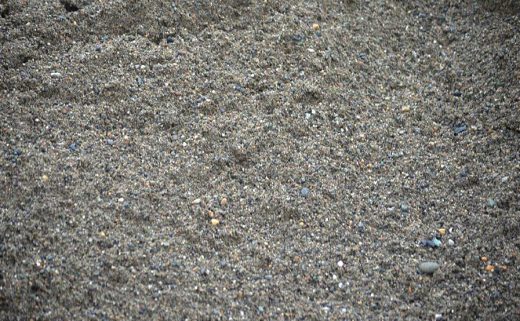
Fig1: Concrete Sand
Courtesy: swgarden.ca
2. River Sand:
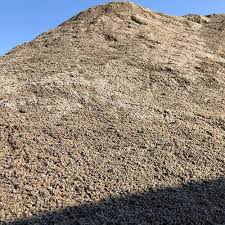
Fig2: River Sand
Courtesy: gomessand.co.za
River sand is a naturally occurring granular material predominantly composed of small particles of eroded rock, minerals, and organic materials. It is typically found in riverbeds, floodplains, and deltas, where rivers have deposited sediment over time. The formation of river sand begins with the erosion of rocks, primarily through the action of water and weathering. As rivers flow, they carry particles of varying sizes, including sand, silt, clay, and larger rocks. These particles are transported downstream and gradually settle as the river’s velocity decreases, leading to sediment deposition on the riverbed.
River sand is a crucial ingredient in concrete, cement, and plaster. These materials gain strength, durability, and workability. River sand is also used for bricklaying, road paving, and pipe and utility line bedding. River sand is utilized in landscaping and gardening as well as construction. It can be used as a top lawn dressing, a substrate for paving stones, or in soil mixtures to promote drainage.
3. Fill sand:
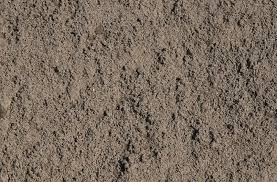
Fig3: Fill Sand
Courtesy: kelleycorporation.com
Fill sand is a type of sand that is commonly used for various construction and landscaping purposes. It is typically composed of fine-grained particles and is often obtained from natural sources such as quarries, riverbeds, or beaches. Fill sand is characterized by its ability to compact easily, making it suitable for filling voids, trenches, and low-lying areas. It is commonly used to level uneven surfaces, provide a stable base for construction projects, improve drainage, and support the installation of various structures.
One of the essential properties of fill sand is its compaction ability, which allows it to settle and create a solid foundation. It is also typically free of organic matter and contaminants to ensure stability and prevent any adverse effects on the surrounding environment.
4. Coarse Sand:
Compared to fine sand, coarse sand has bigger particles. Its rough texture makes it popular in landscaping and building. Coarse sand particles are typically 2.0–5.0 millimeters in diameter. They are bigger and more granular than sand grains. Beaches, riverbeds, and deserts contain coarse sand.
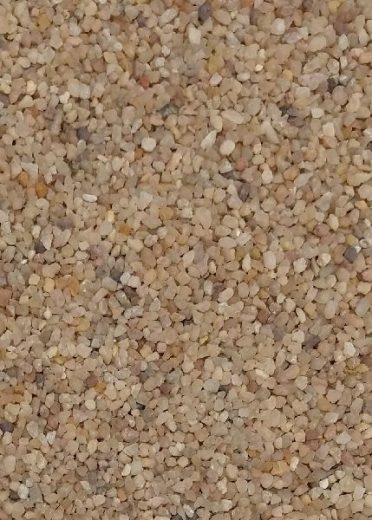
Fig4: Coarse Sand
Courtesy: exportersindia.com
Concrete and mortar compositions often include gritty sand. The mixture is stable and strong due to its bigger particles. In landscaping, it is used as a bedding material for pavers and bricks. Coarse sand is used in gardening and horticulture. It improves soil drainage and aeration when introduced. Coarse sand helps plant roots grow by preventing soil compaction and improving water circulation.
5. Pit Sand:
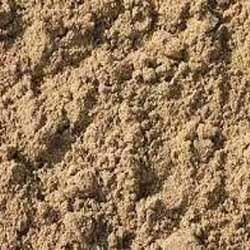
Fig5: Coarse Sand
Courtesy: connect2india.com
Pit sand is a type of sand that comes from pits or mines, which are natural places where sand is found. It is often used in building projects and civil engineering work. Compared to other types of sand, like river or beach sand, pit sand is usually more coarse. Pit sand is primarily composed of small fragments of weathered rocks and minerals. It is usually obtained by excavating or digging into the ground to reach the sand deposits. The sand is then processed to remove impurities such as clay, silt, or organic matter.
Pit sand is used in concrete and mortar mixes in construction. These building materials are stable and strong due to their coarseness. Pit sand can also be used for pipe bedding, road building, and other applications that require a compact and stable foundation. It’s important to note that sand types are defined differently in different places. Local geology and industry affect sand’s properties and usage.
6. Fine Sand:
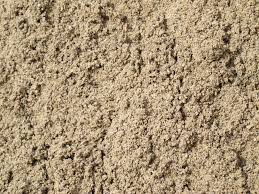
Fig6: Fine Sand
Courtesy: zarrinshen.com
Fine sand is a type of sand with particles that aren’t too big. It has a fine texture and is smooth to the touch. Most fine sand grains are smaller than coarse sand grains, and you can find fine sand in riverbeds, beaches, and mountains. The exact particle size of fine sand can vary, but it generally falls within the range of 0.0625 to 2 millimeters in diameter. These small particles make fine sand ideal for various applications, including construction, landscaping, and creating smooth surfaces.
Fine sand is utilized in mortar and concrete mixtures since it’s compact. Filling gaps between larger particles strengthens and stabilizes the structure. Fine sand makes glass, sandblast, and other industrial items. Because of its softness, fine sand is chosen for beach resorts and leisure places. It’s easier to walk on than coarser sands, making beachgoers more comfortable.
7. Utility Sand:
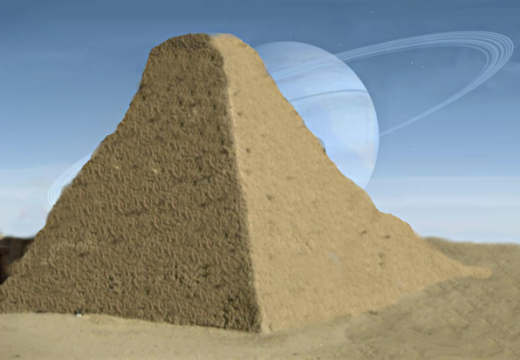
Fig7: Utility Sand
Courtesy: orionsarm.com
This kind of sand is made from high-quality industrial quartz. Because the grains are all the same shape, this building sand compacts well and has good mechanical properties. It can be used in corrosive places because it doesn’t combine with anything. It is a well-known building material because it packs well and has better engineering properties. It can also be used in places with a lot of corrosion because it doesn’t react quickly. The building is stable and durable because it is made of 100% natural rocks in a uniform grain shape.
8. Manufactured Sand:
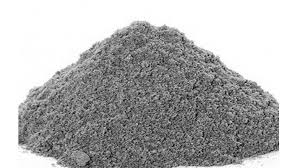
Fig8: Manufactured Sand
Courtesy: aacmaterialsupplies.com
Manufactured sand, or M-sand, is artificial sand produced by crushing rocks, quarry stones, or larger aggregates into smaller sizes. It is an alternative to natural river sand, commonly used in construction activities. The production of manufactured sand involves several processes. Initially, the raw materials are crushed by a primary crusher (such as a jaw or gyratory crusher) to obtain coarse aggregates. These aggregates are then further reduced in size using secondary crushers (such as cones or impact crushers) to produce finer particles.
After crushing, the crushed material is screened to separate the desired particle size range. Construction can now begin with washed and graded synthetic sand. Due to the depletion of natural sand sources, environmental problems associated with sand mining, and the rising demand for high-quality construction materials, synthetic sand is becoming more popular in the construction industry. However, the source of raw materials, production process, and quality standards can affect manufactured sand’s applicability.
Conclusion:
Sand is an essential component in the construction industry and is crucial in various construction activities. It is primarily used as a key ingredient in concrete, mortar, and asphalt, which are basic building materials. However, it is important to recognize the environmental and sustainability concerns associated with sand extraction and use. It’s important to remember a few things when deciding which sand kinds to use. No organic matter or other contaminants should exist, and the silt concentration should be low. In addition, before using sand for building, it is important to conduct thorough research into its qualities.
References:
1. Types of Sand used in Construction. (2022, May 9). Constro Facilitator. https://constrofacilitator.com/types-of-sand-used-in-construction/
2. 6 Types of Sand used in Construction | Homes247.in. (2020, June 27). 6 Types of Sand Used in Construction | Homes247.in. https://www.homes247.in/blogs/types-of-sand-used-in-construction-144
3. Types of sand used in Construction! | Avisun Properties. (2022, August 8). Avisun Properties. https://avisunproperties.com/blog/types-of-sand-used-in-construction/
4. Valle, G., & of Giovanni Valle’s posts. V. A. (2020, January 6). 7 Types of Sand Used in Construction – BuilderSpace. BuilderSpace. https://www.builderspace.com/types-of-sand-used-in-construction
5. JAISWAL, P., & Posts, A. A. (2022, January 4). Different Types of Sand Used in Construction |Builders9. Builders9. https://builders9.com/different-types-of-sand-used-in-construction/
6. C. (2020, October 15). Types of Sand: Uses, Properties, Grain size & Classification. – Cement Concrete. Cement Concrete. https://cementconcrete.org/construction-materials/types-of-sand-grain-size/2667/
If you have a query, you can ask a question here.


